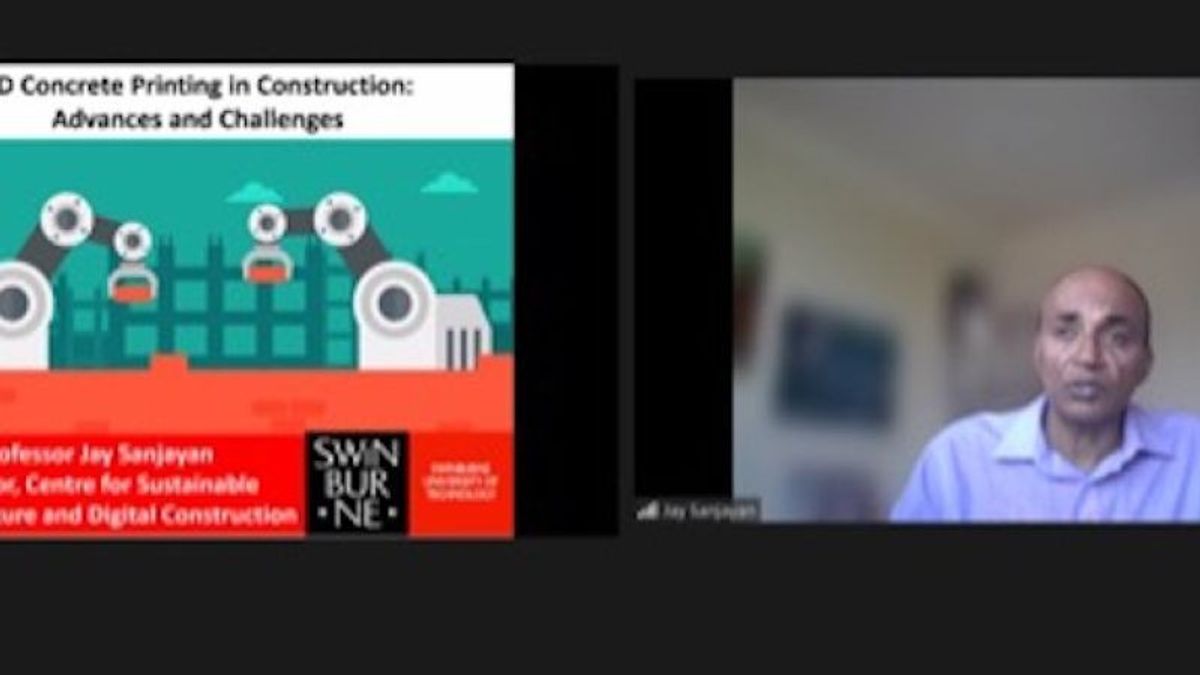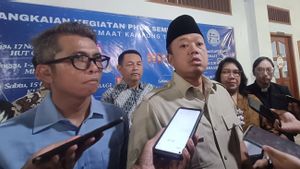JAKARTA - The Education and Culture Attache of the Indonesian Embassy in Canberra together with the Australian Academics and Researchers Network (IARNA) brought together Indonesian and Australian researchers in a webinar themed “Recent Update on 3D Printing Technology for Concrete” in Canberra, Friday (25/2).
The webinar presented Professor Jay Sanjayan from Swinburne University of Technology and Associate Prof. Sotya Astutiningsih from the University of Indonesia (UI).
Atdikbud Canberra Mukhamad Najib in a written statement received in Jakarta, Saturday, explained that the purpose of the event was to facilitate communication between Indonesian and Australian researchers in the same field so that collaboration could continue.
"This event is important so that Australian and Indonesian researchers can know each other's research developments, and then it is hoped that they can communicate and work together to conduct joint research," explained Najib.
The topic discussed in the webinar is the application of 3D printing technology in the growing construction industry in Australia and Indonesia.
"Indonesia and Australia have different climates, so the application of this technology to make buildings certainly has different challenges, and this is interesting to be a topic of joint research between Australian and Indonesian researchers," said Najib as reported by Antara.
He also hopes that the event can encourage the transfer of knowledge and technology, so that research in Indonesia can develop rapidly and Indonesia can be on par with Australia in the field of science and technology.
Director of Swinburne's Center for Sustainable Infrastructure Jay Sanjayan said 3D printing is a three-dimensional printer technology, which can create three-dimensional images on a computer and print them in three dimensions.
This technology, according to him, has been applied to build bridges and buildings in various countries such as England, Italy, China and Australia itself.
Jay sees that since the 1960s, the labor productivity of the construction industry has been on a consistent decline.
When the manufacturing industry has applied digital technology, remote sensing, automation technology and robotics, most of the construction industry is still doing their work manually. So that when other sectors have entered Industry 4.0, the construction sector is still not there.
“The discovery of 3D printing technology can drive the transformation of the construction industry. I believe the use of 3D printing technology in the construction industry will increase accuracy in realizing complex constructions, increase productivity, and reduce labor costs,” explained the professor who studied the study of concrete structures.
While the UI lecturer, Associate Prof. Sotya Astutiningsih, said that geopolymer is a concrete mixture in which the cement material is replaced by by-products such as fly ash, rice husk ash, and others, which contain a lot of silicon and aluminum.
According to Sotya, geopolymer as a construction material is more sustainable than ordinary cement. In addition, as a building material, geopolymer has a better structure.
“In Indonesia itself, 3D printer technology is relatively new. We at campus still use it on a small scale or laboratory scale to make prototypes. However, currently there are startup companies in Indonesia that have succeeded in using 3D printer technology to make type 36 landed houses," he said.
He added that the challenge of using 3D printing technology in Indonesia is the weather because hot temperatures cause cement to dry and harden quickly. If it happens inside the printer, then it will be difficult to fix it. For this reason, it is necessary to do further research on the composition of the right material to be able to make buildings with this 3D printing technology.
The English, Chinese, Japanese, Arabic, and French versions are automatically generated by the AI. So there may still be inaccuracies in translating, please always see Indonesian as our main language. (system supported by DigitalSiber.id)








